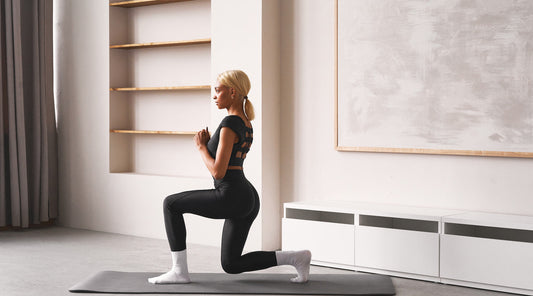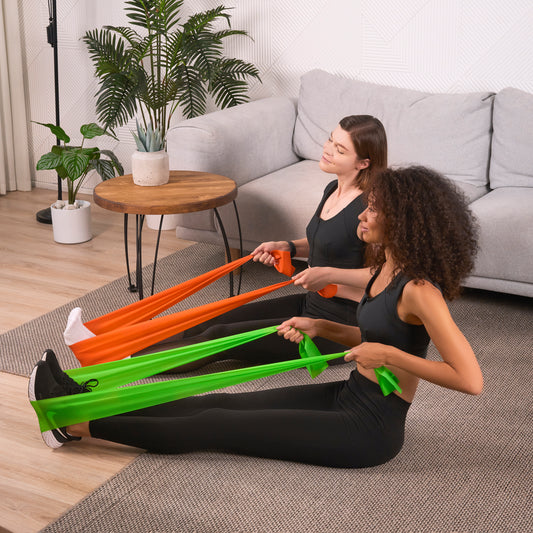The swayback posture is one kind of bad posture that frequently results in lower back pain. Individuals with a swayback posture have forward-tilting hips, exaggerated spine curves, and a backward-leaning appearance when standing.
In this post, we aim to answer the question, “How can sway back be fixed?” to prevent its serious negative impact on the body and health in general.
Compared to most other body parts, the lower back is more likely to experience chronic pain and discomfort. About 80% of people will experience low back pain at some point in their lives.
Completing exercises for swayback correction in the daily routine is a significant step to overall health improvement.
What Is Sway Back Posture?
Swaying back posture is characterized by increased upper back curvature and a correspondingly lowered back curvature. Although this posture seems very comfortable because it doesn't require the use of many postural muscles to stay in alignment, it may be harmful to our spine.
The swaying back posture severely strains your passive spinal structures, including your ligaments, discs, joints, and vertebrae. People who adopt this posture experience back pain as a result of their excessive stress.

undrey / Deposit Photos
Accordingly, the next question is, “How to fix sway back posture?” Ignoring the visual signs of poor sway back posture can provoke serious health issues in the future. In this case, the reliable helper is a posture correcting bra; your well-being will reach new heights after regular use.
Common Causes of Sway Back Posture
Figuring out what sway back posture causes can assist in preventing future problems with the spine and neck.
Laxity in some back and pelvic ligaments, weak abdominal muscles, taut hamstrings, and back muscles are all common causes of swayback posture. These muscles may tense up after extended periods of sitting and become weak and stiff if they aren't stretched correctly over time.
Prolonged sitting with bad posture may also deactivate stabilizing muscles like the glutes and abdominals. In addition to contributing to swayback posture, a lack of activation in these muscles can eventually cause weakness.
Several factors can lead to sway back posture, including the following:
- Obesity.
- Prolonged periods of sitting.
- Weak flexors in the hip.
- Weak muscles in the abdomen.
Sway back posture treatment demands the appropriate modern solutions, like posture correcting bra, which assist in training your spine to maintain proper posture, experience pain relief, and increase mobility.
Symptoms of Sway Back Posture
Numerous individuals lack any outward signs of lordosis. In actuality, you won't recognize it until a diagnosis is made. Variations in your posture are typically more noticeable to others, like:
- The normal position of your head and neck is leaned forward.
- The forward thrust of your hips.
- Your posterior is protruding.
- Additional room beneath your lower back when in a laying position.
More severe curvature-causing lordosis can lead to lower back or neck pain as well as difficulty moving normally.
Exercises to Correct Sway Back Posture
If you are still struggling with how to correct a sway back on your own, there are also easy and gentle exercises you can perform at home.
Specific Exercises to Fix Sway Back
Exercises to improve sway back posture are explicitly designed for such cases and should incorporate the following movements:
- Increase hip flexion for greater hip mobility.
- Bolster the gluteus maximus muscle with more strength.
- Reduce the rectus abdominis dominance and the length of the external obliques.
Exercises that encourage the co-contraction of the muscles surrounding the spine with greater power for simultaneous hip flexion and extension are intended to be included.
Strengthening Exercises
Seated leg lifts
Sit upright on a chair or against a wall with your pelvis in a neutral position. Bracing your arms with your hands resting on the chair next to your glutes. Maintain a three-inch gap between each of your feet and maintain parallel alignment.
Raise your right leg straight up while keeping your left foot on the floor. With your legs locked at the knee, point your toes upward. Lower the elevated leg gradually. For an additional repetition, lift your foot just before it touches the ground.
Planking
This exercise helps strengthen the abdominal muscles and glutes to support the pelvic area. If you're new to the exercise for sway back posture, use your forearms rather than your palms to elevate your body in a low plank.
Stretching Exercises
Child’s pose
Assume a kneeling position and sit on your heels. Lean your arms outward while keeping your hands flat on the floor. Make contact with the ground with your forehead. As you hold this posture, take eight slow, deep breaths in and out.
Lying leg lifts
This exercise strengthens and mobiles the hip muscles. A neutral pelvic position and a relaxed head are important. Keep your back from arching upward, and avoid shifting your pelvis.
Pull your feet off the ground and flex your glutes until your hips are straight from your shoulders to your knees. Take a ten-second break at the top before lowering your leg gradually back to the starting position.
Treatment Options for Sway Back Posture
Typically, a physical therapist would do this. A holistic practitioner personal trainer or athletic trainer with advanced training in this field could also be the source.
To start a corrective exercise program for your swayback ask your healthcare provider for a referral and permission. Exercises focused on posture massage therapy, biomechanics training, and weight control may be part of your treatment plan.
Conclusion
One of the most prevalent kinds of postural misalignment is swayback posture. Its distinguishing features are pushed-forward hips, pronounced spinal curves, and the appearance of leaning back when standing. Muscle tension and weakness are common causes of swayback posture.
A physical therapist can design a customized plan to help you stretch and strengthen particular muscles and maintain good posture. If you're unsure whether you have swayback posture or what caused it, get a diagnosis from your physician.
FAQs
How do I know if I have a sway back posture?
How to correct sway back posture?
How can I prevent sway back posture from developing?
What are the best exercises to fix sway back posture?
What lifestyle changes can help correct sway back posture?
Trending
Try Etalon posture improvement products










